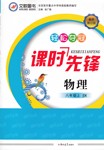题目内容
Qian Xuesen tried many times _________ he found the solution to the puzzle about space technology.
A.after B.before C.since D.when
B
【解析】
试题分析:after在……之后;before在……之前;since自……以来;when当……时候。
句意:钱学森在他发现航天技术之前,他尝试了许多次。
考点:考查连词的用法。
点评:本试题难度适中。判断从句中用哪个连词,需用记住连词的用法,在句中的作用,连词也是高考的热点,需要考生平时多练习。需要考生会分析句子成分理解句意。
即学即练:They stood respectfully ______he entered the room.
A. after B. before C. since D. when
解析:D。句意:当他走进房间时,他们都恭恭敬敬地站着。

 文敬图书课时先锋系列答案
文敬图书课时先锋系列答案
China in the 21st century is making great progress in space technology. In 2003, the country sent up the manned spacecraft Shenzhou-V. Four years later, Chang’e-I went into orbit (轨道) around the moon. In 2008 a Chinese man did the country’s first spacewalk.
These achievements would have been unthinkable without the contribution of Qian Xuesen, a key scientist on space programs and rocketry (火箭技术) of the People’s Republic of China. This pioneering scientist passed away in Beijing on October 31 in 2009 at the age of 98.
Once called “the father of our space industry”, Qian began working on China’s missile and space technology in 1956, when China had little technology. When asked by General Chen Geng whether the Chinese could develop their own missiles, Qian said Chinese could do anything that foreigners could.
His research helped lead to the explosion of China’s first atomic bomb (原子弹) in1964, as well as to its first man-made satellite in 1970 and its first manned spacecraft in 2003.
Qian was born in Shanghai. He graduated from Shanghai Jiaotong University in 1934.Then he studied in the US at the Massachusetts Institute of Technology and later at the California Institute of Technology. During World WarⅡ, Qian’s research contributed to the development of rocket technology that the US military (军队) began using in the 1940s. He was once prevented from leaving the country because it was decided that he knew too much about certain military matters. It was not until in 1955 that Qian returned to China with the help of the late premier Zhou Enlai.
“I plan to do my best to help the Chinese build a nation where they can live with dignity (尊严) and happiness, ” Qian told reporters before sailing for China in 1955. The great scientist devoted all his life to keeping the promise.
【小题1】 What is the article mainly about?
| A.It gives a short history of Chinese missile and space programs. |
| B.It is about how Qian contributed to the Chinese space program. |
| C.It lists important events that Qian experienced. |
| D.It is a brief introduction to Qian, a famous Chinese scientist. |
| A.He was born in China and brought up in America. |
| B.He went to America for further study after graduation from university. |
| C.He returned to his hometown right after finishing his education. |
| D.He had worked on missiles in the US military before coming back to China. |
| A.the first spacewalk | B.the first man-made satellite |
| C.the development of missiles | D.the explosion of an atomic bomb |
| A.the US military had hoped to take full advantage of Qian’s talent |
| B.Qian had an important position in the US military in the 1940s |
| C.when World War broke out, Qian was studying at Shanghai Jiaotong University |
| D.it was not easy to get Qian back from the US |